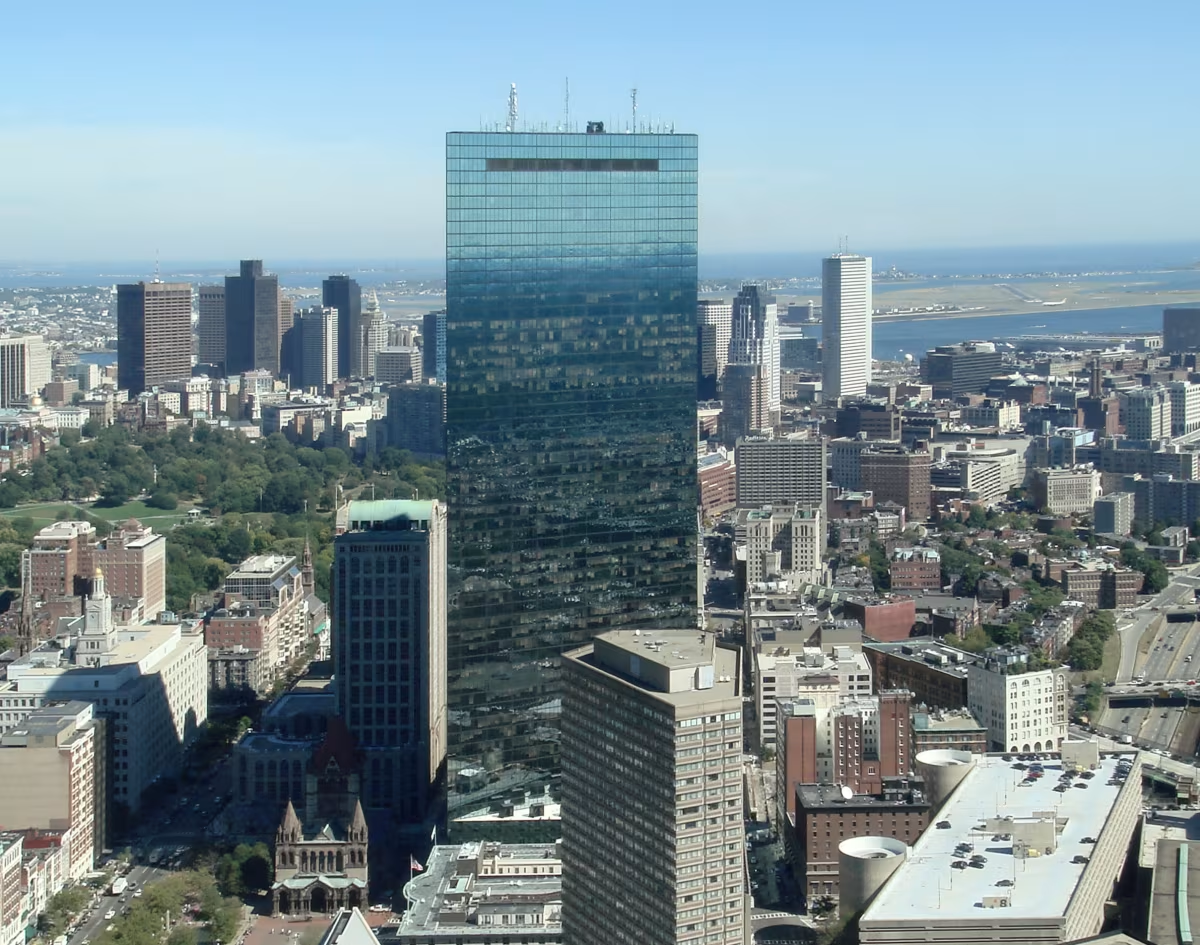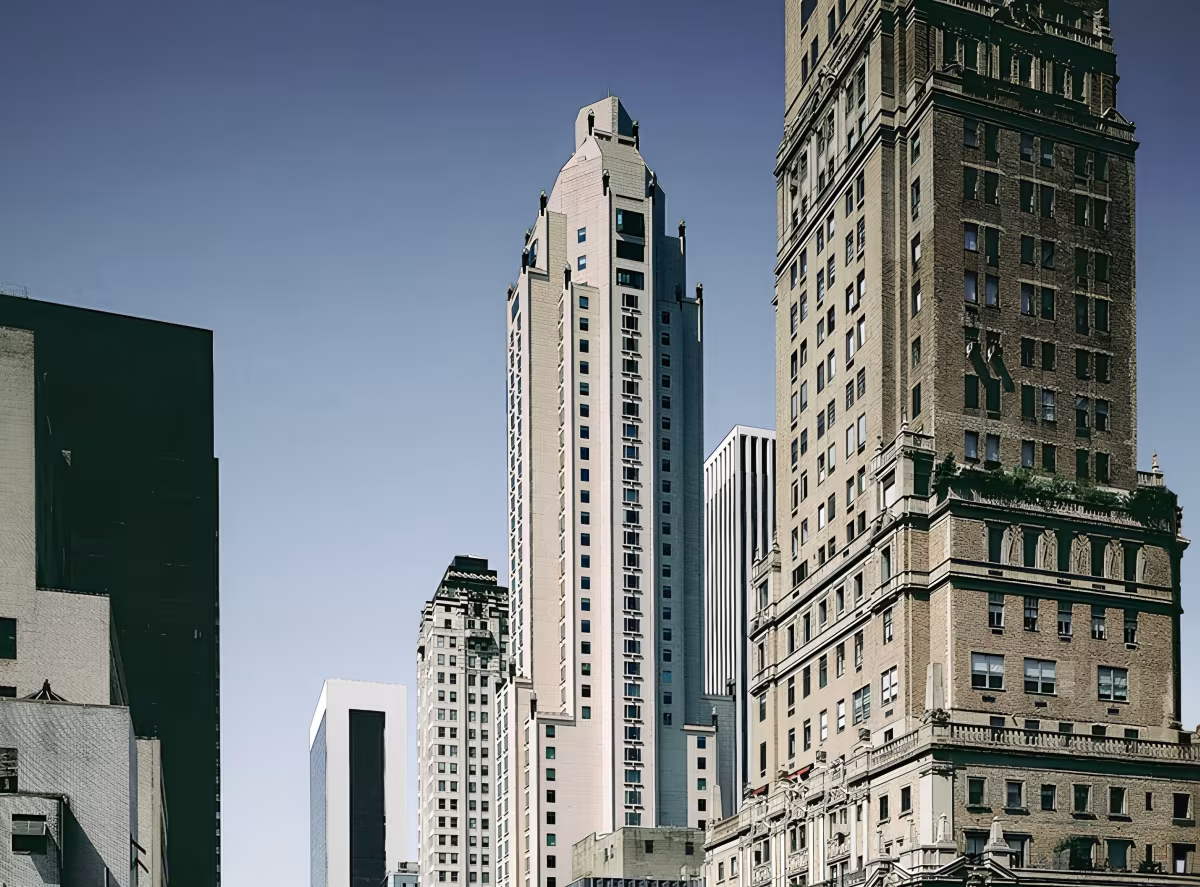John Hancock Tower vs Four Seasons Hotel New York


Comparing the John Hancock Tower and the Four Seasons Hotel New York is compelling because they were both designed by Pei Cobb Freed & Partners, yet they stand in different cities (Boston, MA and New York, NY), and were completed a decade apart.
What this will allow us to see, is how the same firm's approach adapted to different places in different periods of time.
Height & Size
The John Hancock Tower is clearly the larger tower of the two, both in terms of height and number of floors. It rises to 791ft (241m) with 60 floors above ground, while the Four Seasons Hotel New York reaches 682ft (208m) with 52 floors above ground.
John Hancock Tower also offers more total built-up area, a total fo 2,809,378 sqf (261,000m2), which is about 2,281,947 sqf (212,000m2) more than what the Four Seasons Hotel New York offers.
The John Hancock Tower also concentrates more floor area on its site, indicating a higher floor area ratio.
Of course, each project may have faced different briefs or regulatory constraints, which we don't really know about and could also explain the outcome.
Architectural Style
The John Hancock Tower was designed in the International Style style, while the Four Seasons Hotel New York reflects the principles of Postmodernism.
Both towers were built when their respective styles were already past their prime. This makes them feel more like late continuations rather than groundbreaking statements, showing how architectural traditions can linger even as tastes shift.Uses
The John Hancock Tower is primarily commercial, while the Four Seasons Hotel New York is primarily hotel.
The Four Seasons Hotel New York incorporates a 5-star hotel with 368 rooms. More information is available at the official website.
Structure & Facade
Both towers share the same structural solution, a Frame system.
A frame structure uses a grid of columns and beams to carry the building's loads. This frees the walls from structural duties, allowing for flexible floor plans and larger windows.
However, when it comes to the facade, both buildings use different approaches. The John Hancock Tower uses a Curtain Wall facade, while the Four Seasons Hotel New York uses a Masonry facade.
A Curtain Wall facade like the one seen in the John Hancock Tower uses a lightweight glass curtain wall hung from the structure, while a masonry facade like the one seen in the Four Seasons Hotel New York features a heavy masonry skin that gives it a more clasical look.
| John Hancock Tower | Four Seasons Hotel New York | |
|---|---|---|
| Pei Cobb Freed & Partners | Architect | Pei Cobb Freed & Partners |
| 1967 | Design Ended | 1988 |
| 1968 | Construction Started | 1990 |
| 1976 | Year Completed | 1993 |
| International Style | Architectural Style | Postmodernism |
| Commercial | Current Use | Hotel |
| 60 | Floors Above Ground | 52 |
| 241 m | Height (m) | 208 m |
| 261000 | Built-up Area (m²) | 49000 |
| Frame | Structure Type | Frame |
| Steel | Vertical Structure Material | Concrete |
| Reinforced Concrete | Horizontal Structure Material | Concrete |
| No | Facade Structural? | Yes |
| Glass | Main Facade Material | Limeston, Glass |
| John Hancock Mutual Life Insurance Company | Developer | EIE Regent Av Corporation |
| Cosentini Associates | MEP Engineer | Jaros, Baum & Bolles |
| James Rudrman | Structural Engineer | Rosenwasser/Grossman Consulting Engineers |
| MA | State | NY |
| Boston | City | New York |
| 200 Clarendon Street | Address | 57 East 57th Street |